Ryan Hall's Blog, page 175
April 10, 2017
When The Boston Marathon Runs In The Family
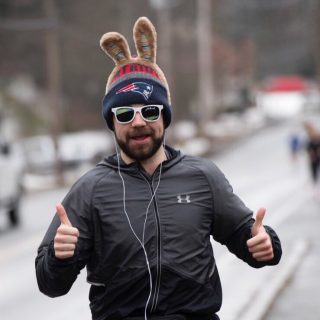
[image error] Max McGillivray, son of Boston Marathon Race Director Dave McGillivray, will run Boston for the first time this year.
Max is from Boston. His parents have run the Boston Marathon. And Max is running the race this year for the first time because he’s “been going since he was born and it’s always been a big part of [his] life.” It’s a classic scenario for those from Beantown, but that’s only part of the story. Max’s parents haven’t just ‘run’ the Marathon. His dad actually runs it.
Max, 23, is Max McGillivray, son of Boston Marathon Race Director Dave McGillivray. His mother is Susan Hurley, a former New England Patriots cheerleader and founder of Charity Teams, a consulting business for nonprofits who want to fundraise through races, like the Boston Marathon and the New York City Marathon. Max is the first of Dave’s five children to toe the line in Hopkinton. (Dave has two sons with ex-wife Hurley and two daughters and a son with his wife Katie.) Max is also running the race as part of the charity team program.
RELATED: Boston’s Hop 21 Is Making The Long Training Run Fun Again
“I’ve never pushed my kids into anything they didn’t want to pursue. Nor did I try to overwhelm them with my involvement in the sport, although it was always all around them,” says the elder McGillivray, who will be running Boston for the 45th time. “However, I did love taking them to the Boston Marathon with me—it made my day to have them by my side.”
 Dave McGillivray holding his son Max at the starter’s platform with Secretary of State John Kerry. Photo: Courtesy of Dave McGillivray
Dave McGillivray holding his son Max at the starter’s platform with Secretary of State John Kerry. Photo: Courtesy of Dave McGillivray
Even Max finds it remarkable that his parents didn’t force running, given their dedication to it. He ran cross-country in high school, but wasn’t a fan. Instead the younger McGillivray focused on academics, theater and other sports. In fact the Harvard grad says that the only thing his parents ever suggested of him was that he slow down and get more sleep. He has since participated in several races, including running a half marathon with his dad. But all of Max’s interests melded when he got a part in the movie Patriot’s Day.
“I played an FBI analyst. It was not a big role. I was on screen for less than five seconds, but it was nice to be in that sort of environment,” says Max who is pursuing a career in filmmaking. “Obviously the subject matter was pretty close to home, and I think they handled it relatively well.”
RELATED: 12 Fast Facts About The Boston Marathon
Max is running for MR8, the Martin Richard Foundation charity team. (Richards was the 8-year-old boy killed in the bombings at the 2013 Boston Marathon.) The Foundation has deep meaning with Max’s family. Along with his dad, Max has already raised over $65,000 for the Foundation this year.
“I knew I wanted to run through one of my mom’s charities, and it’s rewarding to see how much good the Martin Richard Foundation does out of such a difficult experience,” says Max, who says volunteering at the Martin Richard Foundation was the highlight of his marathon training experience. “Yes, I’m running for myself and because of my family’s history with the race. But I needed something to motivate me, to make the experience feel more important than my self interest.”
Hurley was thrilled, but nervous, that her son wanted to run as part of a charity team, since it meant they would be working and training together.
“It’s strange when you’re coaching your kid,” Hurley says. “Sometimes I wondered if he was listening, but it’s gone better than I ever expected. He’s a perfectionist and has done the training and the work. I’m super proud of him.”
Hurley and her son are in the same wave. This means they will walk to the starting line together, something she says brings her to tears. But once the race starts, Max will be running his own race. In fact, Hurley says she doesn’t want to see him on the course because he’s a better runner than her.
In addition to having his mom on the course, Max’s dad will be waiting for him at the finish.
“I wish I could actually run with him side-by-side but obviously I can’t. He will be done before I even start and might be on his third Sam Adams by the time I cross the finish line,” says Dave, 62, who starts his marathon after the other runners finish. “I can hardly wait to put the medal around his neck when he crosses that finish line!”
RELATED: McGillivray Completes 44th Consecutive Boston Marathon
As for Max, he’s ready to run.
“This is a rite of passage for me. I’ve always known I would run the Boston Marathon one day,” he says. “I’m itching to get to the starting line!”
Just like all the other runners on the course, Max will be helped along his 26.2-mile journey by thousands of cheering spectators.
“The cool thing about Boston is that Boston knows runners,” Hurley says. “Now it’s Max’s turn to experience the Marathon as a runner and feel what it’s like to have a city love you and rally around you in a race.”
RELATED: The Expert’s On-The-Course Guide To Spectating The Boston Marathon
The post When The Boston Marathon Runs In The Family appeared first on Competitor.com.
Meb’s Thoughts On His Last Boston Marathon

Meb's 2014 Boston Marathon victory. He became the first American since 1983 to win the race. Photo: Photorun.net
Earlier this year, Meb Keflezighi, now 42, announced that he would run his last competitive Boston Marathon on April 17, and conclude his career at the 2017 New York City Marathon this fall. Meb called us from his training camp in Mammoth Lakes, Calif., to share more details on his retirement, his memories and his plans for the future.
Competitor: When did you decide that this would be your last year of competitive marathoning?
Meb: It has been in the works for a long time. Even when I was a Nike athlete [in the late 2000s], I told them, “Give me until 2012.”
I wanted to go on my own terms. I didn’t go to Beijing [Olympics in 2008]. So I said I’ll prove myself. I’ve got one more Olympics in me, and the potential to win New York or Boston.
Five years later, I’m thankful to Skechers for giving me a second life. To be able to do what I love: I love running. Even though, sometimes, you know marathons, you can fly when things are going well, and other times, when they are not going well, it is very long, lonely days.
I had signed up for New York City 2013 to be my last marathon. But because of the cancellation in 2012, and the horrific moment of the Boston Marathon in 2013, that kept me going.
I told my wife after I won Boston, “I want to try to make another Olympic team in 2016.” She thought I was nuts, I was crazy. “What are you talking about? That’s two more years!” I had to convince her to do that. She’s been looking for my retirement for a long, long time.
In honor of the distance, 26 miles [New York 2017 will be Meb’s 26th marathon], 42 kilometers [Meb is 42 years old], I’m going to stop.
CM: Will you continue to run?
Meb: Running is in my blood, and I’d love to do it for as long as I can. My mindset was to compete as long as I can and as best as I can in high school, college, league championships, state championships, NCAA titles, USA titles—a lot of hard work, a lot of perseverance, and being a competitor. Now, I’m looking forward to the other chapter of my life. I just want to enjoy running. For me it was business, strictly business.
CM: After your first marathon, New York City in 2002, you said, “This is my first and last marathon. I never want to do a marathon again.” When did you change your mind and decide this was going to be your event?
Meb: People always thought it was going to be my event, according to how efficient I was. I could get a steady pace going in high school. Before I knew how far a marathon was, they’d say, “You’re going to be a beautiful marathoner.” But I was a prideful miler. So I didn’t take them too seriously.
When I tried in New York, it was so much pain. I went for the win, I put everything in there. I got it down to four people, and I thought, at best I could win, worse I’d finish top four. I hit the wall hard. Rodgers Rop put four minutes on me in the last five miles. I was moving, but not very fast.
But I learned a lot from it. You don’t always learn when you do well, you learn from your mistakes.
I went to Eritrea, where I was born, two weeks later for the first time. I saw how people were living, trying to survive. I realized that my temporary discomfort was not as bad as day-to-day chores. That people don’t have a choice to run a marathon, but have to work and survive.
RELATED: Marathon Meb—4 Ways To Turn A Bad Race Into A Positive Experience
CM: You didn’t get to run the Boston Marathon until 2006 and have only run it four times. What is distinctive about Boston for you?
Meb: The public knowledge is more about Boston. If you are a distance runner, you are measured by the stature of the Boston Marathon, because it has been going on forever. Even when I was in college, or a 10K runner professionally, people would say, “Oh, have you done the Boston Marathon? You’ve got to do it one day.”
In 2006, I went for it. That was my fittest Boston I’ve ever been. But I made a tactical mistake. I went out too fast, 1:02:45. I thought it was going to be a great PR day, or it was going to be a long day. And it turned out to be a long day.
CM: That’s a classic Boston story, the course lures you into that.
Meb: Absolutely. Ron Tab, who guided me on the side in high school, told me, “Don’t go faster than 4:50 [per mile] the first half of the marathon.” I had my watch, and I’d hit the split whenever the mile markers were coming—but it felt so easy. Then I looked at the total time, and was like, “Oh man, it’s going to be a good day or bad day.” And it was a bad day.
CM: In 2014, you were about as far ahead as well. Did you have any concerns being so far out front?
Meb: By then, that was my 19th marathon, I had all the experience in the world, from coming from behind, or going from the front, or the middle, whatever way. I was not worried.
Boston Strong made it a special year for all of us, motivation wise. My goal was leading the 36,000 people entered to own Boylston Street. I wrote the victims’ names on my bib, and kept pushing and pushing, just kept grinding.
Looking back on the 24 marathons I’ve ever run, except for Chicago where I didn’t go for the win, Boston was the only one where I ran my own race the way I wanted to. The other races, you’ve got to respond to others, trying to cover someone else’s move. Boston 2014 I ran it the way I wanted to run.
To be able to have everybody on their feet, down the tunnel, and be the first American to pull the victory on this most important day. It was a great honor to be able to pull the victory for all of us.
RELATED: Meb Keflezighi’s Boston Marathon Win Powerful On Many Levels
CM: After all that emotion, going into this year, what are you thinking?
Meb: I’m excited to go there, whether I compete for the title, or top 3, or top 10. I’m excited regardless of what happens. I’ve just got to get to the finish line. It’s my 25th marathon, and then I get to do New York.
CM: Going into this race, does it ever intimidate you that there are five people who have run sub 2:05?
Meb: The guys I have beat in the past were 2:04, 2:05 guys. So why should I be scared now? They have to run that time that day. My PR is 2:08:37, but I have beat guys who have run 2:03. I’ve been very fortunate, hopefully I can rise to the occasion again.
All my Boston finishes have been top 10. If I can get that, I will be happy. If that happens, I’ll be able to say, “All my competitive marathons at Boston have been within the top 10.”
CM: Do you see yourself running non-competitive marathons?
Meb: Down the road, that’s what I’d like to do. I’d like to do a marathon a year, maybe Boston and New York. Run with the people—maybe pace a 3-hour, or maybe a 3:30, or 2:40 and 2:50 group—whatever it might be.
I would love to give back as I have the chance, whether it is coaching people, pacing people, or motivating people. I would love to do clinics and seminars on how to run a marathon—to evaluate and spend time with people. I love to meet fellow runners. I get equally excited meeting them as they get meeting me. I enjoy it.
CM: Is your family happy that you’re done with marathons, and finishing up your career?
Meb: Absolutely. My wife will be happy, for sure. It has been hard on her, with the kids. Who ever thought I’d be close to 42 years old, at training camps. I go away for three to four weeks every marathon.
My parents have been ready for me to retire a long time ago. My dad always thought I work so hard. It is a compliment when it comes from your parents that you work so hard, especially from somebody like my father, who walked 225 miles to save his life in the Sudan…
They are ready for me. The time is right. I want to live on my own terms. I want to do it the way I want to do it. I want to spend more time with my siblings, my wife and kids, parents—to work on my foundation and give more time to my fellow runners. I want to spend more time with the people who have supported me over the years.
RELATED: The Top 23 Elite Athletes To Watch In The 2017 Boston Marathon
The post Meb’s Thoughts On His Last Boston Marathon appeared first on Competitor.com.
April 9, 2017
12 Fast Facts About The Boston Marathon
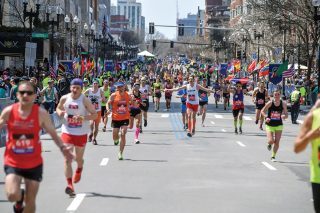

Photo: Courtesy of the Boston Athletic Association
The Beginning
The first Boston Marathon was run on April 19, 1987. At that time, it was known as The American Marathon, with a course that measured 24.5 miles. John J. McDermott of New York finished first out of a 15-man field in 2:55:10. Boston’s now iconic course from Hopkinton to Boylston Street was set in 1924, when it was changed to 26.2 miles to match the Olympic standard.
A Holiday Event
The Boston Marathon has always taken place on Patriot’s Day, a Massachusetts state holiday commemorating the anniversary of the Battles of Lexington and Concord. Since 1969, the holiday has been celebrated on the third Monday in April. Prior to that year, the holiday and marathon fell on April 19.
26.2 Miles Of Landmarks
Runners have a lot to look forward to along the course. The race starts in the small town of Hopkinton. What follows are 10 downhill miles, known to tire out the legs of anyone who starts too fast. Although Heartbreak Hill is notorious, it’s actually one of four inclines in Newton. But nothing beats catching a glimpse of the Citgo Sign, running past Fenway Park, and making it into downtown Boston.
RELATED: An On-The-Course Guide To Spectating Boston
Believe The Hype
The crowd support along the Boston Marathon course rivals any other race. From the Wellesley girls offering kisses at mile 13 to town residents tailgating on their lawns, everyone who lives along the route comes out to offer their support.
Running A BQ
In 1970, the famous qualifying standards were introduced. At the time, a runner had to prove they could finish a marathon in less than 4 hours. Today the standards vary by age group. Due to the overwhelming popularity of the race, hitting the standard doesn’t always guarantee entry.
 Photo: Courtesy of the Boston Athletic Association
Photo: Courtesy of the Boston Athletic Association
The First Women Of Boston
It was not until 1972 that women were officially allowed to enter the Boston Marathon. However that did not stop some brave women from running. In 1966, Roberta “Bobbi” Gibb hid in the bushes along the course before jumping into the race. Wearing a bathing suit and Bermuda shorts, Gibb finished in 3:21:40. In 1967, Katherine Switzer became the first woman to receive a bib number when she signed her entry “K.V. Switzer.” Upon discovering a woman running, race director Jock Semple infamously tried to pull her off the course.
Fast Times
In the right conditions, Boston has produced some of the fastest marathon times ever. The men’s course record belongs to Geoffrey Mutai, who ran a then world record of 2:03:02 in 2011. Buzunesh Deba holds the women’s record of 2:19:56, set in 2014.
RELATED: The Top 23 Elite Athletes To Watch In The 2017 Boston Marathon
The Jacket
Every year the B.A.A. kicks off the excitement of Boston by unveiling their annual jacket. First released in 1991, runners eagerly await the release because a different color scheme is chosen each year. This year’s jacket is blue with glow-in-the-dark detailing.
Wild Weather
Despite the springtime date, the weather at the Boston Marathon can be wild. A Nor’easter hit the course in 2007. In 2012, the start temperature was 77 degrees, rising to 84 by 3 p.m. In 2015, participants had to deal with a steady cold rain. However those events overshadow the perfect weather that awaits most participants. The average start temperature is typically high 40’s to low 50’s.
 Photo: Photorun.net
Photo: Photorun.net
American Winners
In 2014, Meb Keflezighi became the first American male to win the Boston Marathon since 1983. The moment was made even more poignant because it was one year after the horrific Boston Marathon bombings. The last American woman to win was Lisa Larsen Weidenbach in 1985.
RELATED: Could An American Win The Boston Marathon This Year?
Famous Finishers
Over the years many celebrities have taken the trek from Hopkinton to Boston, including Will Ferrell (3:56:12), Joey McIntyre (3:57:06), Lisa Ling (4:34:18), Uzo Aduba (5:03:24), Valerie Bertinelli (5:14:37) and Ali Landry (5:41:41).
A New Era Of Racing
Boston became the first major marathon to include a wheelchair division. In 1975, athlete Bob Hall was permitted to use a wheelchair on the course as long as he finished under 3 hours. His finish, in 2 hours and 58 minutes, ushered in a new competitive field in marathon racing.
RELATED: Here’s What Went Into Making the 2016 Boston Marathon
The post 12 Fast Facts About The Boston Marathon appeared first on Competitor.com.
April 7, 2017
Nuun Has Launched A Drink Formula For Longer Runs

Nuun has launched Performance, a new drink powder for extended workouts. Unlike nuun tablets, which offer hydration during shorter runs, Performance is for use during activities longer than 90 minutes or intense workouts.
Nuun claims the mix of electrolytes, carbs and fluid found in Performance is absorbed better than water. It also does not stay in your GI system, eliminating the stomach distress that other drinks can cause. Performance should take care of fueling and hydration needs for some runners during long runs, big workouts, and race day.
“We challenged ourselves to do what no other sports drink has done. The nuun team wanted to create a product that delivered superior performance without compromising the pure sources that ultimately hydrate you,” said Kevin Rutherford, nuun President and CEO.
All ingredients are certified non-GMO and as close to their natural state as possible. Even the flavoring comes from dried fruit powder, instead of artificial ingredients. Available in two flavors—Blueberry/Strawberry and Orange/Mango—the taste is supposed to be closer to fruit-infused water, since taste buds become more sensitive over the course of exercise. Most importantly, the product is certified as Informed Choice—Safe for Sport, meaning there are no banned substances.
Performance is available at nuun.com in a single serving packet for $1.99 or a 16 oz. pack for $19.99.
RELATED: 5 Tips For Training Your Tummy
The post Nuun Has Launched A Drink Formula For Longer Runs appeared first on Competitor.com.
Race Day—Triple Amputee Takes On His First 5K
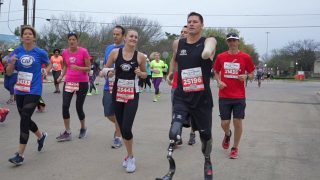
Mike Atherton only had one goal on his mind: to run and finish the Humana Rock ‘n’ Roll Dallas 5K. He’s been a lifelong athlete and runner—but unlike his fellow competitors, he is also a triple amputee.
Mike lost both of his legs as well as his left arm in a tragic boating accident in 2009. After slowly regaining the ability to walk (with the help of prosthetic legs), Mike set his sights on running again.
For six months, Mike trained tirelessly for the race, building up his endurance and strength while learning to run on his new prosthetics. Without a doubt, training for the 5K was one of the greatest challenges Mike has ever faced: “It really pushed me to my limits,” he recalled, “It really got me to do things I never thought I could do.”
On the day of the race, Mike was hopeful but nervous. Understandably, he feared he might stumble and fall during the race—or worse, fail to finish, letting himself and his family down. But his daughter, Maddie, never had any doubts. “Seeing him come this far, he’ll pull through… he’ll find a way to do it,” she said.
Mike would have motivation and encouragement every step of the way: Maddie ran alongside him, and Mike’s loved ones would be cheering him on.
Even with months of training, the race proved a challenge. Mike and Maddie started the race at a strong pace, but Mike soon grew tired, slowing to a walk; it seemed as though he may have pushed himself to his capacity. Then, suddenly, determination overcame fatigue. Mike retook his pace, with Maddie in step, pushing through his pain in the sweltering heat.
He pushed himself all the way to the finish line.
Mike and Maddie crossed the finish line together, his wife and son waiting to adorn them with medals. Even better than a trophy, though, were his feelings of elation and pride. Mike’s main goal had been to finish the race, and he had, inspiring countless people in the process.
Reflecting on his incredible accomplishment, Mike noted that none of it would have been possible without the mobility afforded to him by his special prosthetics—and, of course, without the support of his family and friends.
To read more about Mike’s journey, click here
The post Race Day—Triple Amputee Takes On His First 5K appeared first on Competitor.com.
April 6, 2017
The Top 23 Elite Athletes To Watch In The 2017 Boston Marathon
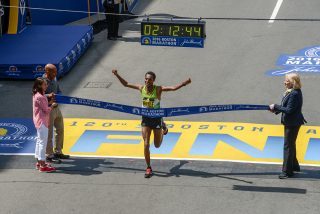
Two Olympic medalists (both American), six past champions, and 18 Olympians overall add up to a star-studded professional lineup for the 121st running of the Boston Marathon. Leading the charge will be the defending champions, Lemi Berhanu Hayle for the men and Atsede Baysa for the women, both from Ethiopia. As a group the field has won 15 Abbott World Marathon Majors and 79 international marathon titles. But only two will emerge as champions on April 17. Here are some of the names to watch.
RELATED: Could An American Win The Boston Marathon This Year?
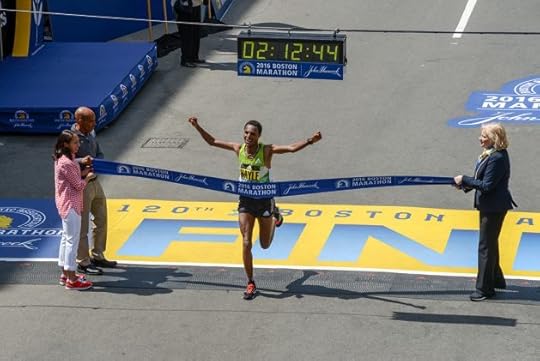


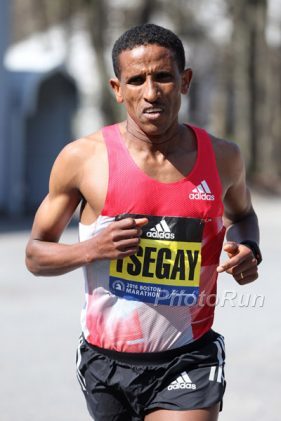
[image error]
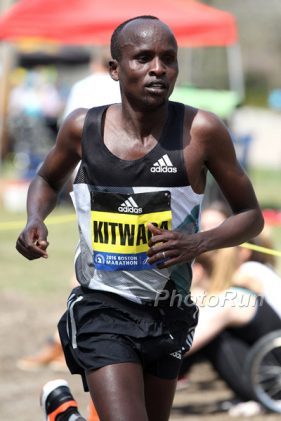
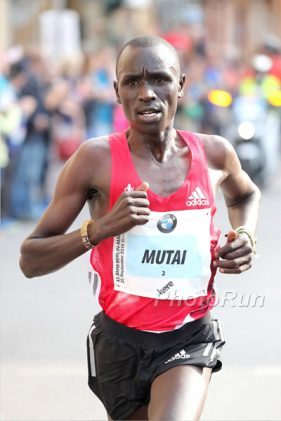

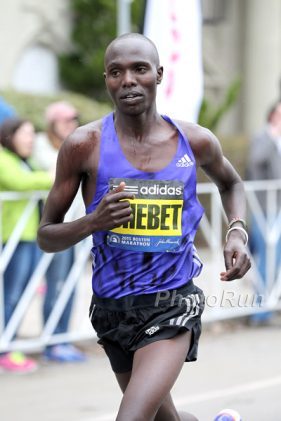
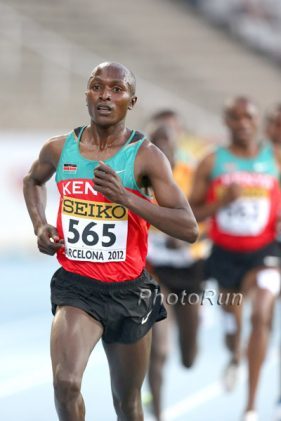
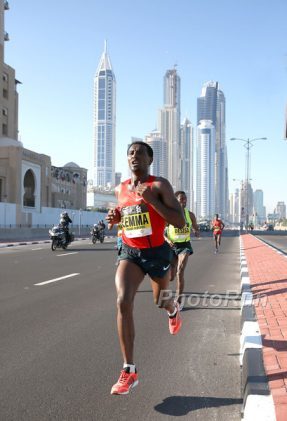
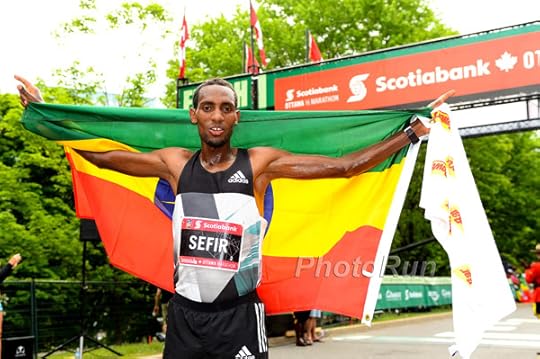
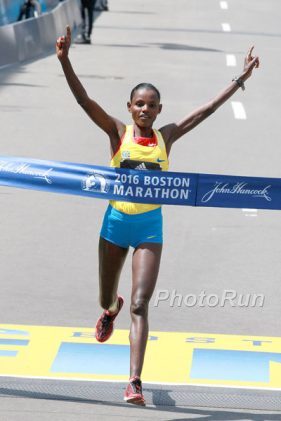
[image error]
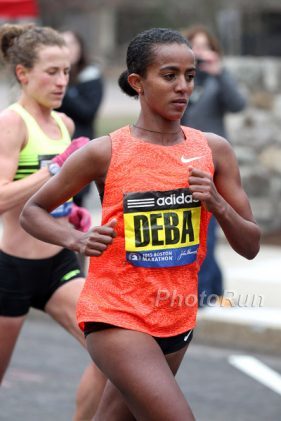
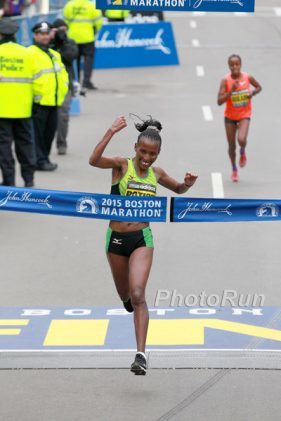
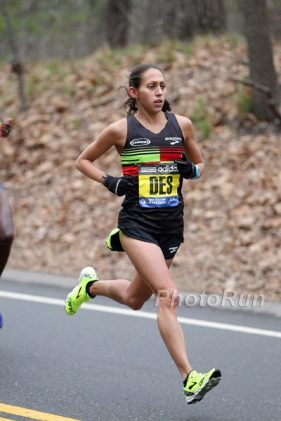
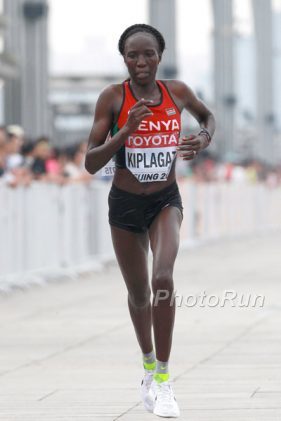
[image error]
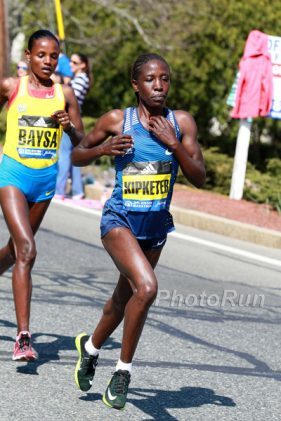
[image error]
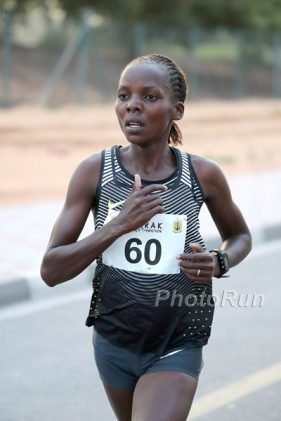
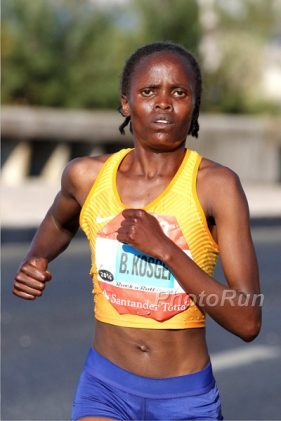
The post The Top 23 Elite Athletes To Watch In The 2017 Boston Marathon appeared first on Competitor.com.
Could An American Win The Boston Marathon This Year?
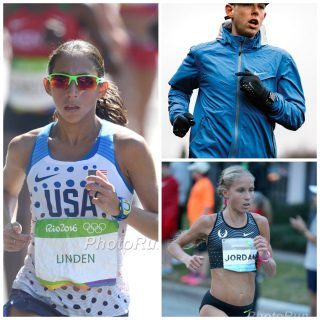
Left: Desi Linden (Photo: Photorun.net) Top Right: Galen Rupp (Photo: Neil Decosta) Bottom Right: Jordan Hasay (Photo: Photorun.net)
Lest we forget, the Boston Marathon was first run on April 19, 1897, the day commemorating the Battles of Lexington and Concord, the first engagements of America’s Revolutionary War. You know—the midnight ride of Paul Revere. “The British are coming! The British are coming!” Accordingly, in its early years, Boston was dubbed The American Marathon.
Over its first half century, Americans and Canadians won all but two of the races. But in the wake of World War II, with the opening of international travel, runners from around the world began arriving to take on North America’s best.
Following John A. Kelley’s second win in 1945, it would be twelve years before the next American victory, by namesake, though unrelated, John J. Kelley, in 1957. Ten more international wins followed before Young Kel’s former pupil, Amby Burfoot, of New London, Conn., stood atop the Boston podium for the USA. Then began another six-year drought before the boom years of American distance running arrived, led by Bill Rodgers’ first of four wins in 1975.
For the last generation, however, the Boston Marathon, like all marathons worldwide, has been taken over competitively by athletes from East Africa. The transfer of power has been overwhelming since Ibrahim Hussein of Kenya became Africa’s first Boston champion in 1988. Only twice in the past 25 years has a non-African, international man (Italy’s 1988 Olympic Marathon gold medalist Gelindo Bordin won Boston in 1991 and South Korea’s 1996 Olympic silver medalist Lee Bong-Ju won Boston in 2001) stepped atop the winner’s podium on Boylston Street.
The 2014 vision of American Meb Keflezighi securing the first U.S. male victory since Greg Meyer in 1983 was so emotional, especially in the aftermath of the 2013 finish line bombings. It became the marathon equivalent of the Boston Red Sox World Series win a decade earlier, as each snapped losing streaks of historic proportions.
This year, in Boston’s 121st running, another strong American contingent will take on the mighty East Africans, including all three 2016 U.S. American male marathon Olympians: Galen Rupp, Jared Ward, and Keflezighi. The odds may still be long that an American man or woman can win, but they aren’t nearly as long as they once were.
RELATED: Why The Boston Marathon Is So Special
Leading the way will be the ageless Keflezighi. However, at age 41, his chances for victory seem slight, as he has announced that this will be his final competitive year of racing.
Of course, the name on everyone’s lips is Galen Rupp. He is current standard bearer of American running, holder of two Olympic medals—silver in the 10,000m in London 2012, and bronze in the marathon from Rio 2016.
Outside Ryan Hall (4th in 2011 in 2:04:58), Rupp is the most exciting home-bred American hero to come to Boston since his coach Alberto Salazar returned home to win in 1982. Rupp not only has the talent, but when in full form, he would be worth putting a bet down on as the race favorite.
But there’s an injury question swirling around the 30-year-old from Portland, Ore. In his final tune-up race at the Prague Half Marathon on April 1, Rupp finished 12th in 61:59. While the time itself is more than solid for marathon prep, there was concern. “Unfortunately, I felt some discomfort in my foot during the race today. Hopefully, it will be OK for Boston,” Rupp admitted to Race Results Weekly afterwards.
Rupp had not raced in the four months prior to Prague, as a nagging left foot plantar fascia issue forced him to withdraw from the Houston Half Marathon in January. While the marathon distance may have been tamed by modern training methods, Boston remains a particularly stern test that can take down even a healthy runner. Arrive with any problem, and the undulating course serves as a ruthless investigator. The latest from Portland suggests that Rupp and Coach Salazar are evaluating the situation day-to-day, although still optimistic.
RELATED: Galen Rupp Makes His Boston Debut Amid A Storm
On the women’s side, local heroine Shalane Flanagan (a Marblehead, Mass., native) had to withdraw with a back injury. That leaves the redoubtable Desi Linden and debutant Jordan Hasay as this year’s American hopefuls. Boston has not seen an American woman win since Lisa Rainsberger (then Weidenbach) took the title in 1985.
Since her oh-so-close second place finish in the 2011 Boston Marathon, Linden has had a hard time finding full form. Injuries have always kept her from full flight, though two years ago she finished fourth. In February 2016, she qualified for her second Olympic Marathon team in Los Angeles before finishing seventh in Rio, one place behind Flanagan. Now Linden comes to Boston with a full build-up and a confidence which has her talking running’s version of trash–time to put up or shut up about winning.
Hasay is a former high school phenom from Arroyo Grande, Calif., who followed with two NCAA titles while at the University of Oregon. She will be making her marathon debut in Boston, the final step in her exploration into the longer road distances. And it’s been a revelation. She, like Rupp, is coached by Salazar, and she, too, was in Prague on April 1, racing in only her second half marathon.
Unlike Rupp, Hasay nailed her final tune-up, finishing a strong sixth in 67:55, a PR by 45 seconds and only five seconds off the podium. Her time was also the third fastest half marathon ever run by an American woman, behind Deena Kastor (67:34) and Molly Huddle (67:41). Even before Prague, the talk in Portland was that she was hitting similar benchmarks in training as when Kara Goucher, a former Salazar-trained athlete, finished third in Boston in 2009 after leading through Heartbreak Hill.
Yes, the Americans are coming! The Americans are coming! Is it possible we could hear the Star Spangled Banner play this Patriots Day? Wouldn’t that be a charge.
RELATED: The Top 23 Elite Athletes To Watch In The 2017 Boston Marathon
The post Could An American Win The Boston Marathon This Year? appeared first on Competitor.com.
These Are The Best Watches For Every Runner Budget
Runners going watch shopping have an ever-widening range of options and capabilities to choose from: starting from the basics of time, pace and distance to wrist heart rate, activity and sleep tracking, phone connectivity and sophisticated training systems. Here’s what you get for your money at different price points.
RELATED: 7 Things to Know About GPS Watches
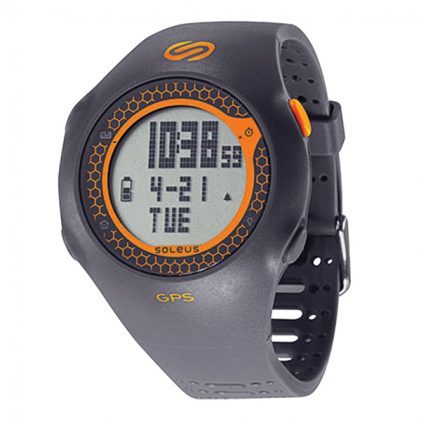
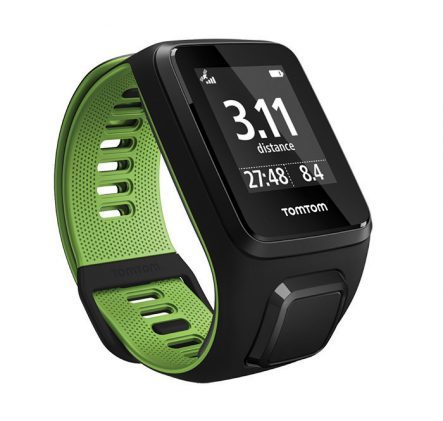
[image error]

The post These Are The Best Watches For Every Runner Budget appeared first on Competitor.com.
6 Moves To Get In A Complete HIIT Workout At Home
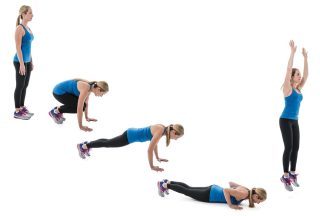
Unless you’ve been living under a very large rock, you’ve probably noticed high-intensity interval training’s (HIIT) influence on athletic performance. In fact, the American College of Sports Medicine recently ranked it as one of the top fitness trends of 2017. Involving multiple rounds of strenuous, high-intensity efforts, these workouts pack a powerful punch in terms of boosting fitness.
The research backs up that contention. HIIT has been shown to improve everything from heart health to VO2max as successfully as endurance training. HIIT workouts can make you faster, reduce body fat and improve cardiorespiratory fitness. It’s even been shown to be more enjoyable when compared to more moderate training.
Keep in mind that these types of workouts should be done on relatively rested legs. You should also plan an easier run the next day. Jog for 10 minutes prior to this HIIT workout, which can be done at home without any special equipment. Complete three to four rounds of 30–60 seconds of each exercise with a minute of rest in between each.
RELATED: Strength Train Like a Dancer—The Barre Circuit Workout
[image error]



[image error]

The post 6 Moves To Get In A Complete HIIT Workout At Home appeared first on Competitor.com.
HOKA ONE ONE And Oiselle Team Up For A Limited Edition Shoe
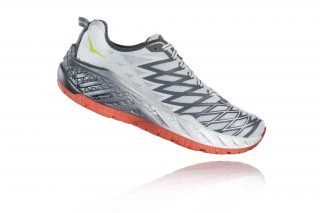



[image error]
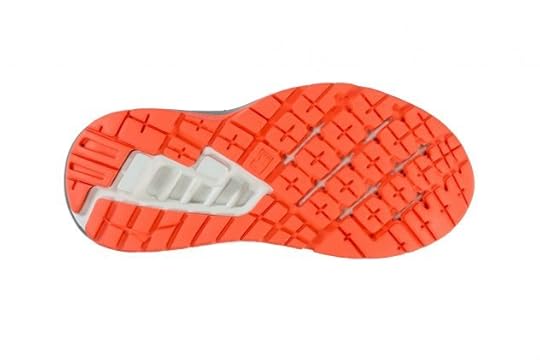

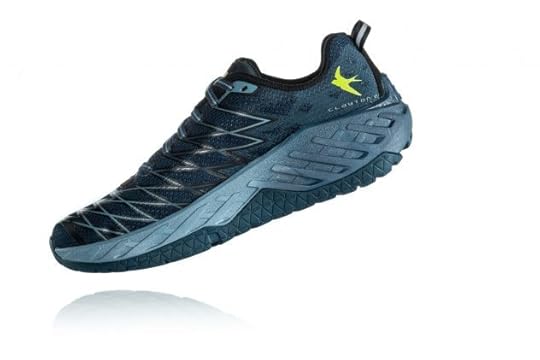

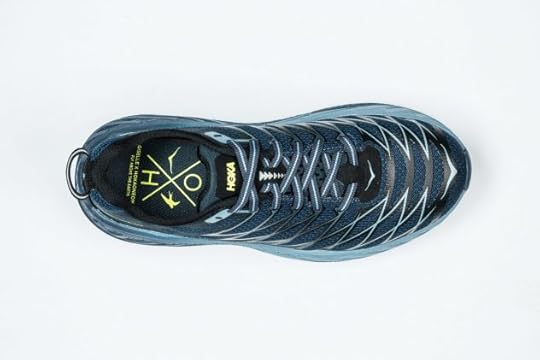
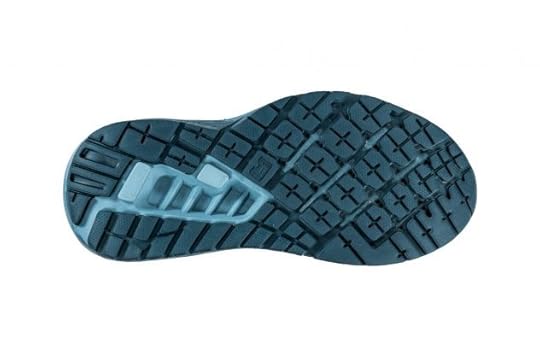
HOKA ONE ONE and Oiselle know the perfect way to celebrate women who fly. The two beloved brands have teamed up to create the Oiselle x HOKA Clayton 2, special edition shoe. One of HOKA’s best-selling models, the Clayton 2, has been updated with two different color schemes to reflect Oiselle’s Spring 2017 line.
“We thought Oiselle would be a good partner for several reasons—they’re solidly rooted in running and create a product that is beautiful, wearable and versatile, while also sharing similar brand values of providing consumers with the inspiration and tools they need to reach their fitness goals,” said Gretchen Weimer, VP of Product at HOKA ONE ONE in a statement.
Sally Bergesen, Founder and CEO of Oiselle added, “The Oiselle community of women are experts in flying, and this shoe, based on the popular Clayton model, will help them do more of that.”
Runners who want to score a pair of the Oiselle x HOKA Clayton 2’s better move fast. The shoes, which launched on April 6, are only a limited edition. They are available for purchase at both oiselle.com and hokaoneone.com, retailing at $160. HOKA will also be carrying a limited selection of Oiselle clothing.
Take a look through the gallery and decide which color you like the best.
RELATED: Why Women’s Apparel Companies Are On The Rise
The post HOKA ONE ONE And Oiselle Team Up For A Limited Edition Shoe appeared first on Competitor.com.
Ryan Hall's Blog
- Ryan Hall's profile
- 21 followers



